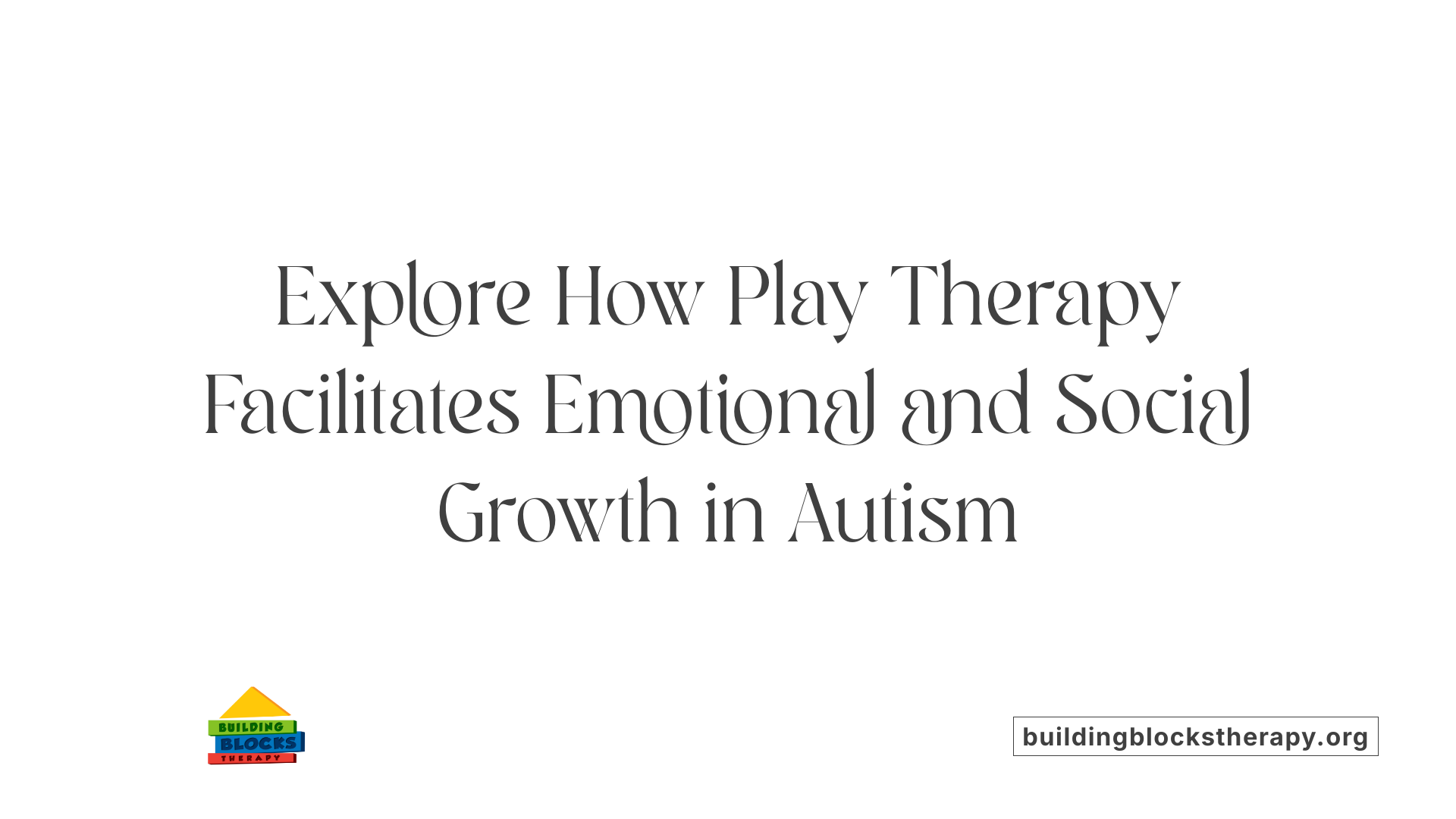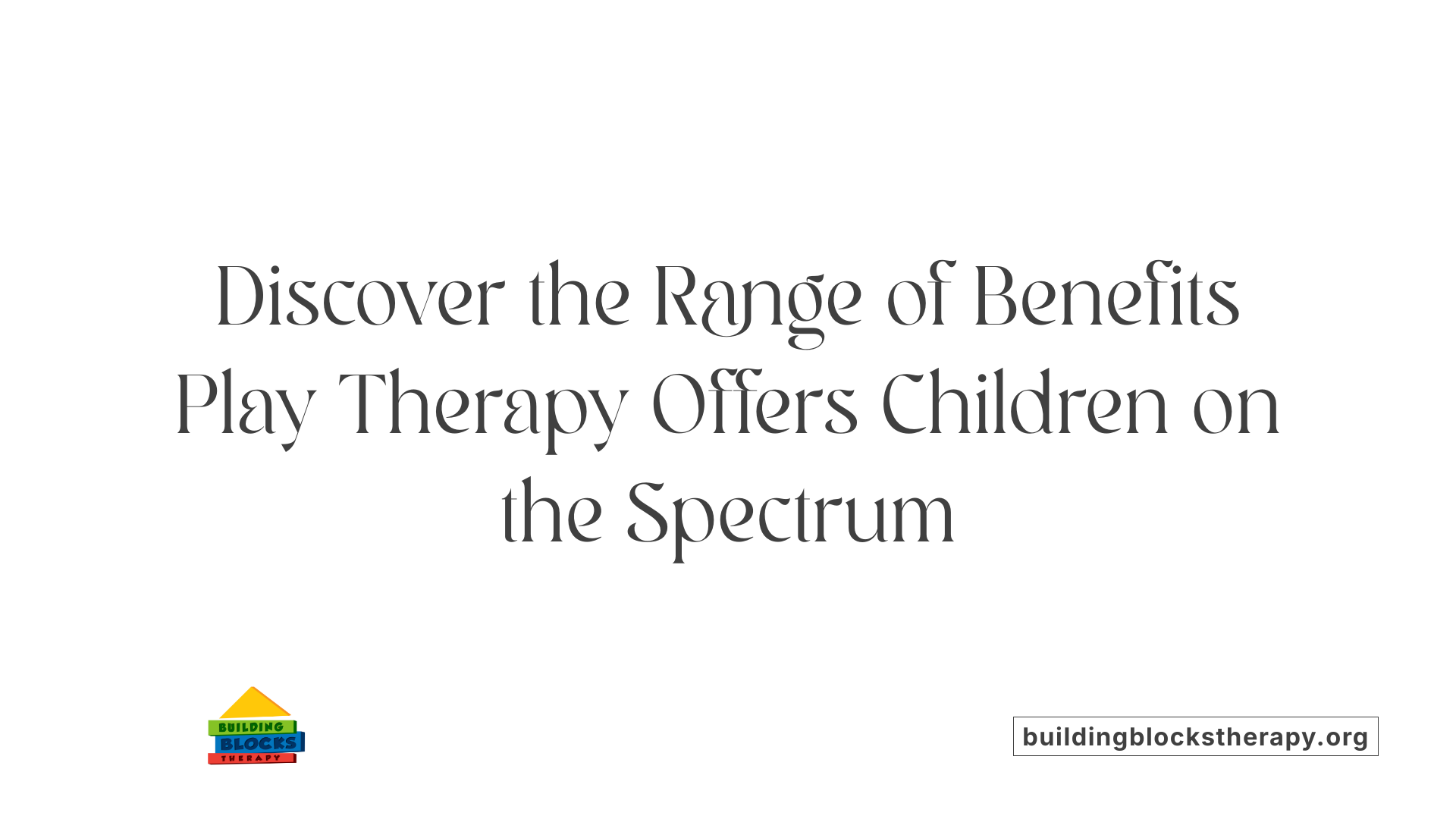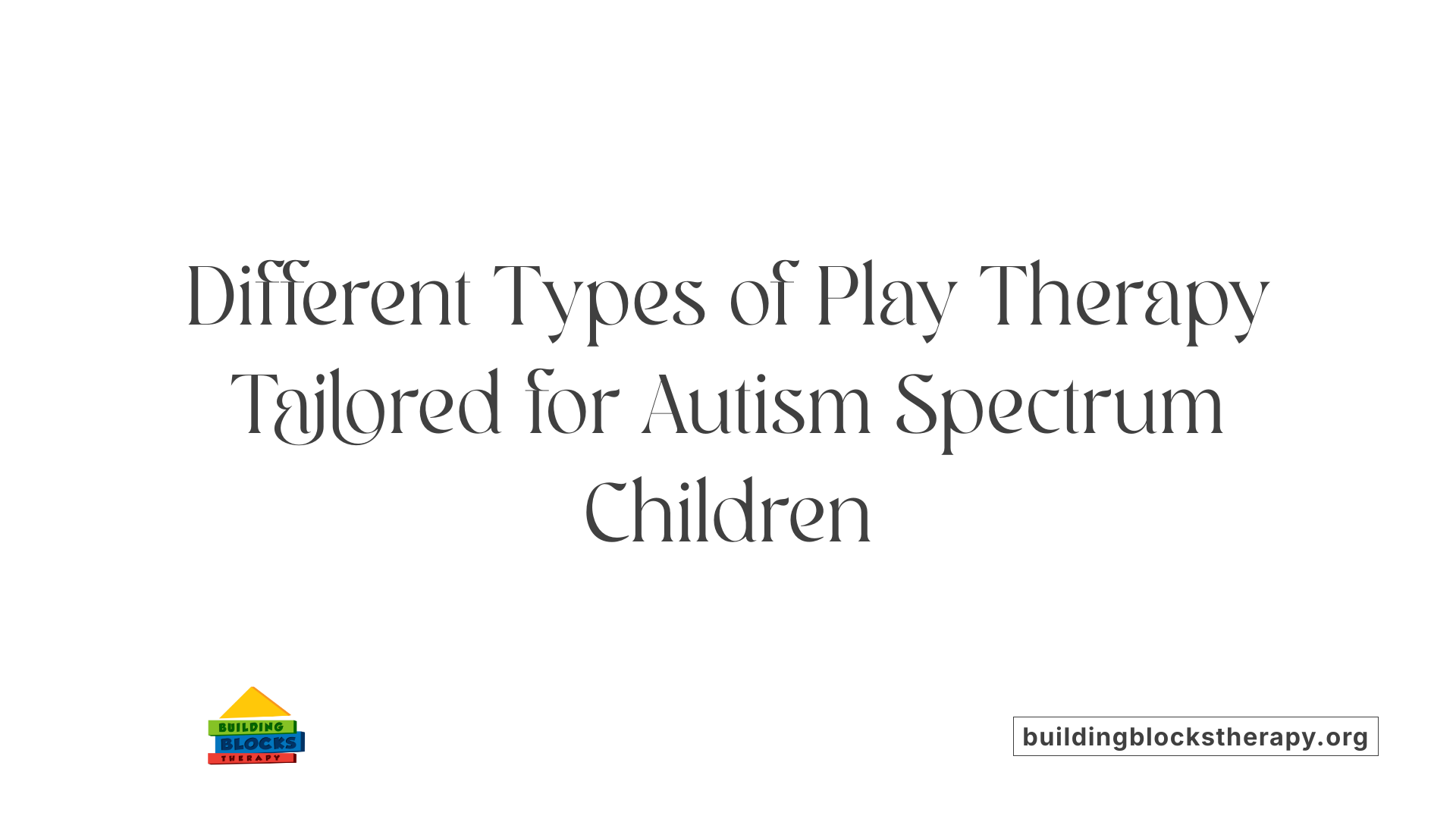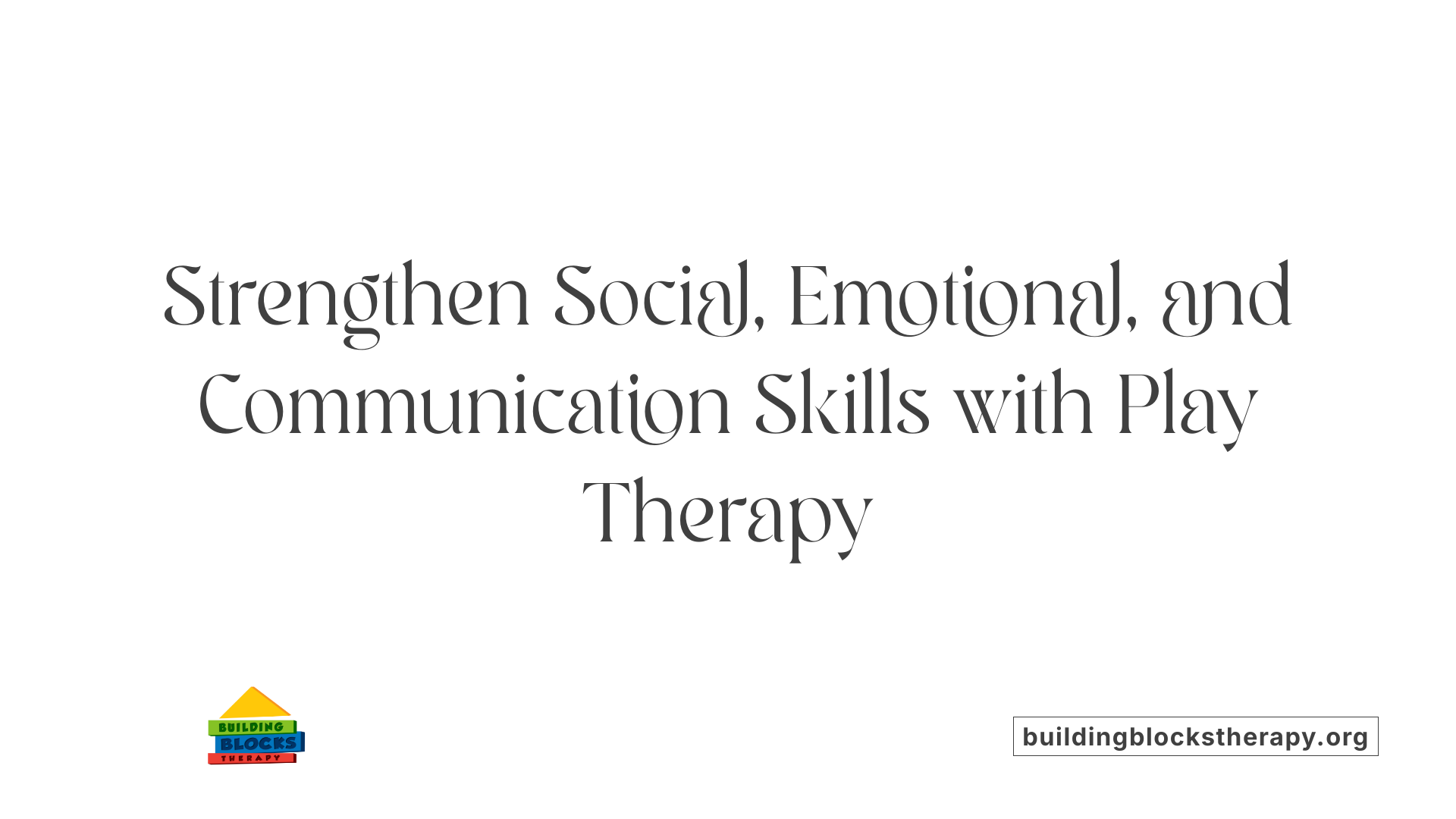Understanding the Vital Role of Play Therapy in Autism Care
Play therapy has emerged as a vital component in the comprehensive treatment of autism spectrum disorder (ASD). By leveraging children's natural inclination towards play, therapists can create engaging, tailored interventions that promote social, emotional, and communication skills. This article explores the significance of play therapy, its methods, benefits, evidence of effectiveness, and how families can actively participate in the process.
The Role of Play Therapy in Autism Treatment

What is the role of play therapy in autism treatment?
Play therapy is an essential tool used to support children with autism by focusing on their natural interest in play. It provides a developmentally appropriate, child-centered environment where children can explore their emotions, improve social interactions, and develop communication skills.
Through engaging activities such as pretend play, sensory activities, arts and crafts, and role-playing, children are encouraged to express themselves and work on emotional regulation. Play therapy helps children understand social cues and navigate their social environment more effectively.
Different techniques are tailored to each child's unique needs. For example, structured play therapy involves goal-oriented tasks targeting specific behavioral challenges, while Child-Centered Play Therapy (CCPT) offers a supportive space for emotional growth.
In addition, specific models like DIR/Floortime focus on fostering emotional connections and supporting communication in a way that matches the child's developmental level. These approaches promote social and emotional growth while respecting individual differences.
Family involvement is also a vital part of play therapy. Active participation of parents can deepen understanding of the child's needs, strengthen family bonds, and promote the generalization of skills learned during therapy.
Research suggests that although more studies are needed, the evidence indicates that play therapy can lead to improvements in social and communication skills in children with autism. It also fosters self-expression, reduces anxiety, and builds confidence, making it a valuable component of a comprehensive treatment plan.
Overall, play therapy harnesses the natural, engaging act of play to promote meaningful developmental progress, helping children with autism navigate their world more effectively and comfortably.
Benefits of Play Therapy for Children with Autism

What are the benefits of play therapy for children with autism?
Play therapy offers a wide range of advantages for children on the autism spectrum. It provides a natural way for children to enhance their social interaction and communication skills through engaging activities. By creating a secure and welcoming environment, play therapy encourages kids to express their feelings freely, helping to develop emotional regulation.
Through play-based activities like pretend play, drawing, and interactive games, children often experience boosts in their creativity, confidence, and problem-solving skills. These activities not only support emotional and social growth but also help improve sensory integration and motor skills.
Different therapeutic approaches, such as Child-Centered Play Therapy, Structured Play Therapy, and DIR/Floortime, can be customized to align with each child's individual needs. This tailored approach ensures targeted support for various developmental areas, fostering greater social competence and adaptive behaviors.
Overall, play therapy plays a vital role in promoting emotional growth, social communication, and behavioral development. Its engaging, child-friendly methods make it an effective compliment to other treatments, helping children navigate their world more confidently and comfortably.
How Play Therapy Supports Autism Intervention Strategies

How does play therapy work as part of autism intervention strategies?
Play therapy is a vital component of autism treatment, utilizing both structured and unstructured activities to foster essential skills. It creates a child-centered environment where children can express themselves freely through toys, art, sensory activities, and pretend play.
This approach aims to improve communication, social interaction, and emotional regulation by engaging children in activities they find interesting and comfortable. For example, sensory-based activities such as swinging, jumping, or using weighted objects help children manage sensory input, while social play fosters interaction with peers.
Various techniques are adapted to individual needs. DIR/Floortime, for instance, emphasizes building emotional connections and supporting communication through play, aligned with each child's developmental level. Child-Centered Play Therapy allows children to resolve emotional conflicts and develop coping skills.
Models like ABA (Applied Behavior Analysis) integrate play within evidence-based frameworks, focusing on reinforcement and prompting to teach specific skills in engaging ways. Similarly, JASPER (Joint Attention, Social Communication, Engagement, and Play) promotes social and communication skills through targeted play activities.
By combining these methods, play therapy supports natural learning processes, encourages peer interactions, and helps children develop vital social, emotional, and cognitive skills. Importantly, active involvement from parents enhances therapy outcomes, reinforcing learned behaviors at home.
In summary, play therapy in autism intervention strategies offers a flexible, personalized approach. It nurtures emotional expression, builds social competence, and promotes overall developmental progress, making it a powerful tool for supporting children with autism on their growth journey.
Varieties of Play Therapy for Autism Spectrum Children

What types of play therapy are used for children on the autism spectrum?
Children with autism benefit from different types of play therapy tailored to their unique needs and developmental stages. One popular approach is Child-Centered Play Therapy (CCPT). This method provides a safe, supportive space where children can express themselves freely through play, helping them manage emotions and improve self-awareness.
Another common modality is Structured Play Therapy. Unlike CCPT, this approach involves planned activities, such as social stories, role-playing, or game-based exercises, aimed at developing specific skills like communication, social interaction, and problem-solving.
Sensory-based play therapy focuses on activities that help children regulate sensory input. These may include swinging, jumping, or using weighted objects to address sensory processing difficulties, which are common in autism.
Relationship-driven approaches like DIR/Floortime emphasize building emotional connections through play. These strategies support language development, social engagement, and emotional regulation, fostering natural interaction based on the child's interests.
In addition to these, evidence-based interventions such as JASPER (Joint Attention, Symbolic Play, Engagement, and Regulation) and peer social skills groups promote core social skills like joint attention and cooperative play.
Many therapists also incorporate expressive arts, sand tray activities, or technological tools including virtual reality to enhance engagement and learning.
The selection of play therapy depends heavily on thorough evaluation, ensuring interventions match each child's developmental level, specific needs, and personal strengths. Tailored therapy maximizes benefits, encouraging skill development, emotional growth, and better social integration.
Supporting Evidence for Play Therapy Effectiveness
Research findings highlight that play therapy can lead to meaningful improvements in children with autism across several developmental areas.
Studies show significant shifts in social and emotional skills, including reduced social withdrawal and increased empathy. Children participating in play therapy often demonstrate better communication skills and emotional regulation after intervention.
Neural assessments, such as EEG recordings, reveal brain activity changes associated with improved social functioning, indicating that play therapy might promote neuroplasticity linked to emotional and social growth.
Various modalities—like sensory integration activities, arts-based interventions, and even equine-assisted therapies—offer additional benefits. These approaches help children process sensory information, express themselves creatively, and practice social interactions in safe, engaging settings.
Although more rigorous, high-quality research is necessary to definitively establish effectiveness, existing studies provide promising evidence. Randomized controlled trials show reductions in core autism symptoms and improvements in adaptive behaviors.
Overall, the accumulating research supports that different forms of play therapy can effectively foster communication, reduce stereotypical behaviors, and build emotional resilience in children with autism. These findings indicate that play therapy holds potential as part of a comprehensive treatment plan for developmental gains.
Enhancing Social, Emotional, and Communication Skills through Play Therapy

How does play therapy help children with autism develop social, emotional, and communication skills?
Play therapy provides a nurturing and engaging environment where children with autism can build vital skills needed for social interaction, emotional regulation, and effective communication. Therapists carefully design activities that encourage children to practice foundational responses such as joint attention—which involves sharing focus on objects or events with others—and imitation, which helps in understanding and mirroring social cues.
Symbolic play, where children use toys or objects to represent other items or ideas, supports imagination and language development. These activities help children grasp abstract concepts, express emotions, and better interpret social scenarios.
A crucial aspect of play therapy is the establishment of trust and confidence between the child and the therapist. Through consistent, positive interactions, children begin to feel secure, which enhances their willingness to engage and explore social relationships.
Furthermore, tailored techniques like visual aids and sensory experiences cater to each child's unique needs, promoting emotional regulation and sensory integration. Such personalized approaches foster independence and strengthen emotional well-being.
Therapeutic relationships formed during play also help reduce anxiety, creating a safe space for children to work through their challenges. As children become more comfortable, they demonstrate improved social responses, increased empathy, and better communication skills.
Overall, play therapy not only nurtures emotional health but also lays a strong foundation for social skills, enabling children with autism to interact more effectively with peers and adults. This pleasurable process encourages growth across multiple developmental areas, making it a valuable tool for enhancing independence and emotional resilience.
Fostering Growth and Well-Being Through Play
As a natural medium for development and healing, play holds profound potential for children with autism. Play therapy not only addresses core developmental challenges but also promotes confidence, emotional resilience, and social understanding. When integrated into comprehensive autism care, and supported by family involvement and evidence-based practices, play therapy can significantly enhance the quality of life for children and their families, making it an indispensable part of therapeutic strategies.
References
- Play therapy in children with autism: Its role, implications, and ...
- Play Therapy For Autism: What Parents Need to Know - Blue ABA
- Play Therapy for Autism: Benefits, Techniques & Tips - Forbrain
- Play Therapy's Role in Pediatric Autism Services for Kids
- Reducing Anxiety in Children with Autism with Play Therapy
- A Guide to Play Therapy for Children on the Autism Spectrum
- Play Therapy Ideas for Autism | BIFA
- Play Therapy For Autism: What Parents Need to Know - Blue ABA






